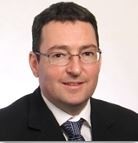Breast Care - Southland | Southern | Te Whatu Ora
Description
Formerly Southern DHB Breast Care - Southland
The Breast Care Service (on the Dunedin site) has a “one day work-up” of patients who have been referred, which is efficient and patient-friendly. Results are provided in a more timely fashion and the amount of travel for appointments reduced.
One-day work-up includes clinical assessment by the surgical team with appropriate imaging and any required laboratory samples to enable accurate diagnosis as quickly as possible. Patients will then be booked for other procedures if necessary.
Please use the one page Breast Care Services GP referral form to enable the Breast Care Service to accurately triage referrals. An electronic copy will be available through the PHO link.
Please send referrals to the breast care nurse at the appropriate location.
Patients with suspected breast abscess ideally should be discussed with breast team (surgeon or registrar) and if appropriate imaging arranged by contacting nurses in BCS. Out of hours radiology can contacted directly by the specialist.
